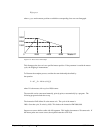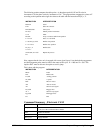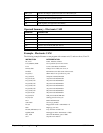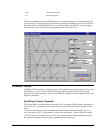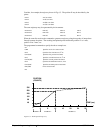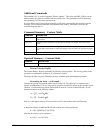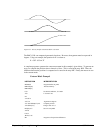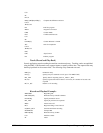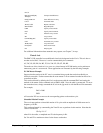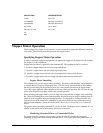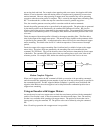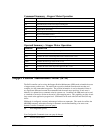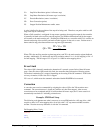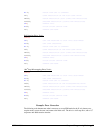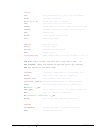
Chapter 6 Programming Motion • 90 USER MANUAL
D=C+1
DELTA=XPOS[D]-
XPOS[C]
Compute the difference
DX[C]=DELTA Store difference in array
C=C+1 Increment index
JP #L,C<500 Repeat until done
#PLAYBCK Begin Playback
CMX Specify contour mode
DT2 Specify time increment
I=0 Initialize array counter
#B Loop counter
CD XPOS[I];WC Specify contour data
I=I+1 Increment array counter
JP #B,I<500 Loop until done
DT 0;CD0 End contour mode
EN End program
For additional information about automatic array capture, see Chapter 7, Arrays.
Virtual Axis
The DMC-13X8 controller has an additional virtual axis designated as the N axis. This axis has no
encoder and no DAC. However, it can be commanded by the commands:
AC, DC, JG, SP, PR, PA, BG, IT, GA, VM, VP, CR, ST, DP, RP.
The main use of the virtual axis is to serve as a virtual master in ECAM modes, and to perform an
unnecessary part of a vector mode. These applications are illustrated by the following examples.
ECAM Master Example
Suppose that the motion of the XY axes is constrained along a path that can be described by an
electronic cam table. Further assume that the ecam master is not an external encoder but has to be a
controlled variable.
This can be achieved by defining the N axis as the master with the command EAN and setting the
modulo of the master with a command such as EMN= 4000. Next, the table is constructed. To move
the constrained axes, simply command the N axis in the jog mode or with the PR and PA commands.
For example,
PAN = 2000
BGN
will cause the XY axes to move to the corresponding points on the motion cycle.
Sinusoidal Motion Example
The x axis must perform a sinusoidal motion of 10 cycles with an amplitude of 1000 counts and a
frequency of 20 Hz.
This can be performed by commanding the X and N axes to perform circular motion. Note that the
value of VS must be
VS=2p * R * F
where R is the radius, or amplitude and F is the frequency in Hz.
Set VA and VD to maximum values for the fastest acceleration.



